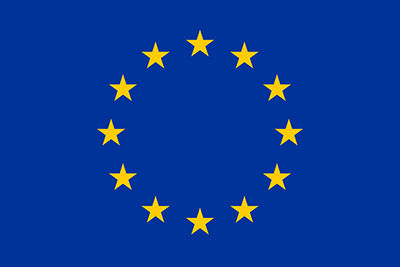Heracles
HERACLES project is to propose a holistic multidisciplinary and multi-sectorial approach with the aim to provide an operative system and eco-solutions to innovate and to promote a strategy and vision of the future of the CH resilience. According to DRS 11, Disaster Resilience & Climate Change Topic 3, the overall objective of HERACLES is the set-up of an interoperative operational chain (remote and local monitoring, simulating and forecasting, characterizing, maintaining, restoring, etc.), with the purpose to increase the resilience of a CH assets supported by a decision support system and innovative eco-solutions. This system is conceived to be operationally available for decision makers at different levels as well as to the different actors involved in the mitigation of the Climate Change effects on CH vulnerable assets for promoting concerted actions. As a consequence, integrated innovative solutions and conservation techniques in the cutting-edge of the present state of art will be delivered by the present project. Therefore, HERACLES requires research and expertise on different fields such as: user needs assessing, forecasting and modelling of the climate events, sensing and ICT systems, designing and development of eco-innovative materials, defining new standard operative procedures, organization of training and education. HERACLES team has been built to cover all these specific competences according the very deep experiences and skills of individual partners. According to the described concepts, the general objectives of HERACLES project are summarized as follows:
Development and validation of a scalable and flexible innovative ICT platform able to collect and integrate heterogeneous data for a situational awareness and decision support.
Design and implementation of new environmentally sustainable solutions and materials for the long-term maintenance and restoration of CH, under the climatic change impact, taking also into account the economical sustainability and the cultural and social integrity. Outcomes of the HERACLES platform and new solution/materials identified will be strictly correlated in a iterative process where new designed and adopted solutions for the interventions represent information to be ingested in the ICT platform in order to identify proper maintenance, remediation and restoration actions.
Elaboration and integration of forecast climate models and experimental data into the platform as start-point of the local CH-specific analysis where implementing the solutions developed during Objective 2.
Set-up specific guidelines for long-term prevention and maintenance actions, able to account specifically the CH site features and the risks affecting it, and for the operational procedures for risk management.
Strategies and tools to promote HERACLES results to a widespread arena of recipient communities.
Demonstration of the effectiveness of HERACLES at three challenging tests beds: two are in Crete, Greece, the Knossos Palace and the coastal Venetian fortification with a focus on the Sea Fortness of “Koules” (both on the UNESCO Tentative List); the third one is the historical town of Gubbio in Italy (on the Tentative List of immaterial UNESCO Heritage. In addition to their historical value, these sites are affected by different kinds of hazards due to climate change effects, that can be generalized to several other areas in Europe and worldwide (see sites description).
HERACLES strategic objectives listed above will be pursued by the achievement of the specific technical objectives to be reached during the projects lifetime, in particular:
- Improved methodologies and analysis taking into account climatic change impact (at European and proper regional downscaling) for weather forecasting (with emphasis in extreme events frequency of occurrence and intensity) and identification of the relationship between meteo-climatic parameters and environmental risks (in a holistic approach of a coupled air-sea-land interaction) for CH.
- Development of a model for monitoring and mitigating these risks.
- Design and implementation of an integrated approach, based on both remote sensing and in-situ techniques with a minimal or not invasive features, able to couple structural long term monitoring and quick damage assessment of the site and the single structures.
- Development of methodologies able to integrate monitoring data with structural models for a vulnerability assessment.
- In situ and ex-situ physical-chemical characterization of the CH assets, i.e. materials constituting the assets and their degradation process and causes.
- Development of an ICT platform enabling a situation assessment / awareness building information and decision support system for the full implementation of diagnosis, monitoring, remediation and crisis management services, through the integration of multi-source data.
- Develop a very high resolution climatic dataset by applying dynamical downscaling techniques to General Circulation Models (GCMs). High (3x3km) resolution analysis will be achieved by dynamic downscaling of the GISS GGCM ModelE2 using the WRF meteorological model based on the low resolution GISS GGCM ModelE2 combined with the Russell ocean model. Output of HERACLES will be a maximum resolution of the climate dataset (Start project 27×27 km, Midproject 9×9 km, End of project 3×3 km).
- Design and formulation of innovative and environmentally sustainable materials for building elements, specifically tailored for maintenance and restoration on the basis of the integrated indications received from the previous actions about the risk factors affecting CH induced by climate changes.
- Assessment of the applicability of the new materials in order to evaluate the contribution to preventive conservation and consequently, to the sustainability and authenticity of the cultural assets. In this phase a first scale-up of the technologies to the market level will be tackled. As the same time, the study of their long-term behaviour on the treated works of art will be evaluated.
- Development of industrial processes for transferring the materials technology to the market.
- Definition of environmentally sustainable and cost-effective actions for the long-term maintenance, conservation and restoration (important the role of AB).
- Definition of the operational protocols for the overall CH risk cycle management(important the role of AB).
- Sharing of knowledge and networking through dissemination of the developed technologies and best practices.

